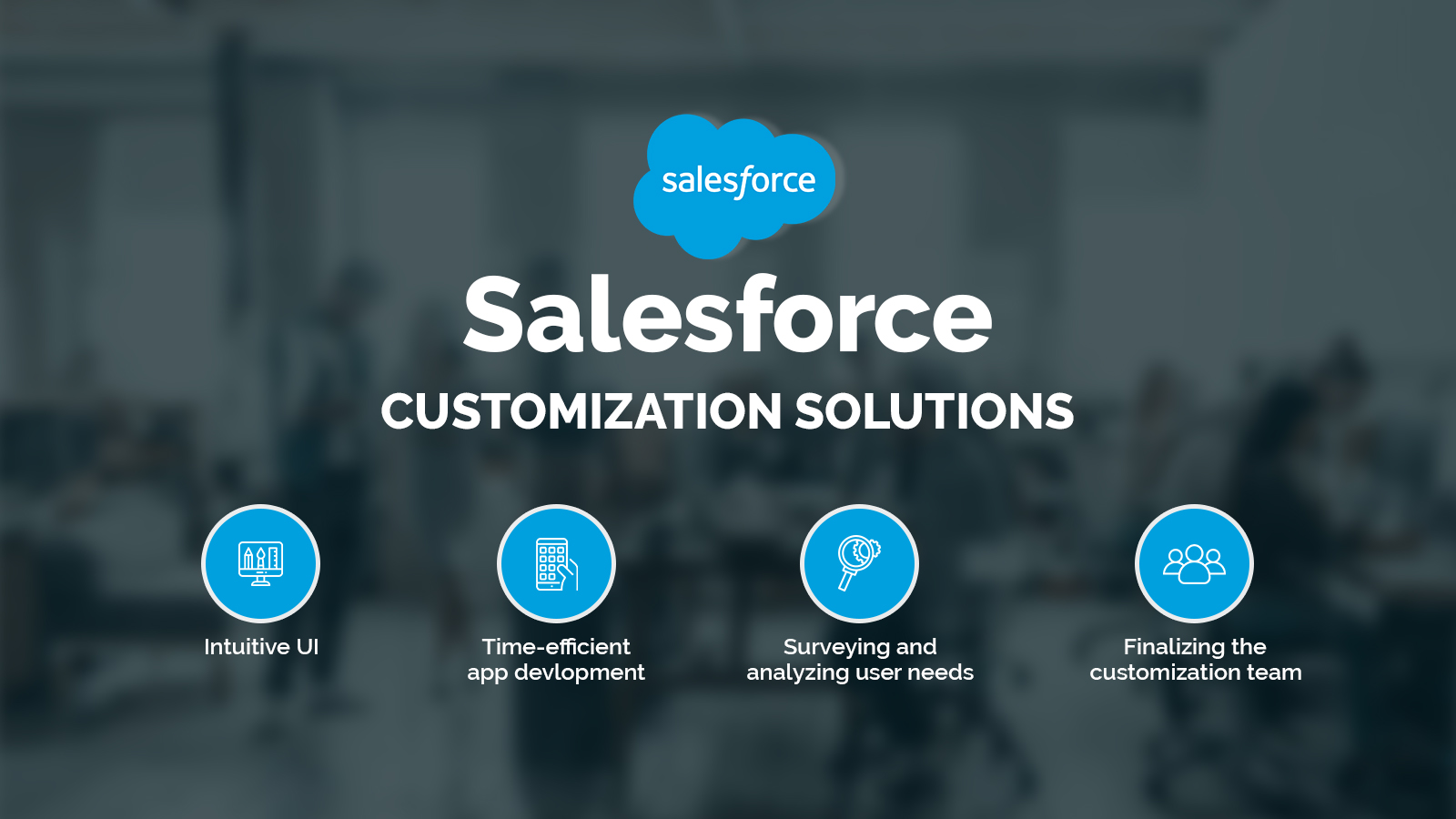From managing sales pipelines to improving the quality of customer service, businesses are relying on Salesforce. Being one of the robust customer relationship management software suits, Salesforce helps businesses connect with customers better and faster.
But as every business has its own unique requirements, it is important to be able to customize Salesforce so that it serves enterprise needs better. That is the moment almost all Salesforce owners face; it is a moment when they feel that it is about time to customize their Salesforce org to suit their organizational needs better. It is a time when they feel that it is high time to fine-tune this CRM platform according to their needs.
In short, Salesforce customization is big and the best part is that this platform is designed to easily get customized. However, there is often some confusion about Salesforce’s customization and its configuration. A few leaderships often think that both customization and configuration of Salesforce are one and the same. But that is not true.
Which is why, it is necessary to disabuse the notion that both Salesforce configuration and customization are the same.
Configuration Versus Customization
Configuration means that enterprises will be able to tailor any Salesforce solution with point-and-click tools, which are declarative and do not need any specific programming skills. A Salesforce admin may be able to deal with the necessary configuration work quite easily and successfully. When you configure any Salesforce org, you may be able to change its user interface or its data model.
Under Salesforce configuration, you may be able to:
- Create new fields and objects
- Develop a fresh tab or new a group of tabs, which is known as an app
- Build validation rules for verifying the data entered within the CRM for meeting a business’s internal quality control standards
- Enable default email templates
But when it comes to customizing a Salesforce org, it is all the more complex than configuration. Enterprises want to customize their Salesforce orgs when they want to introduce a specific level of functionality that is impossible to achieve with configuration.
- In a way, customization is a step ahead of configuration and implies tailoring a Salesforce solution with the help of a full-fledged code. The customization code of Salesforce is usually written by a trained Salesforce developer. Some possible forms of Salesforce customization may comprise:
- Enabling the execution of bulk operations such as processing a large volume of data
- Developing custom processes that may do a variety of tasks including calculating revenues and taxes
- Deploying custom email templates using Visualforce for a range of tasks such as the invoices for warranty and email management
Most customized Salesforce solutions come with the options of customizing and configuring. Which is why, enterprises and the hired Salesforce development team must strike an optimal balance between both customization and configuration.
If an enterprise has just started with Salesforce, then it makes complete sense to balance both configuration and customization by harnessing Salesforce capabilities and the tools completely. As time passes, the enterprises may face a need to deep change the existing Salesforce solution. For carrying out such deep changes, Salesforce customization, which is a code-based customization schedule, comes into play.
Tailoring The Salesforce Org
If enterprises have the right capabilities, they will never miss the opportunity to tailor their ecosystem. Tailoring a Salesforce Org becomes simpler and faster because of many reasons such as:
Intuitive UI
Salesforce boasts a simple and ultra-intuitive set of UI design tools that are fairly easy to master. Which is exactly why, the developers can seamlessly introduce changes, even the most specific ones, in the UI on their own.
Time-efficient app development
Developing an app in Salesforce takes just a couple of hours. Thanks to its suite of drag-and-drop features, Salesforce allows anyone to develop a full-fledged app on Salesforce with zero hassle. However, building a sophisticated Salesforce application this way is not possible. However, this feature is very helpful for a business that is looking for quickly developing a specific action. With such an action, you will find it faster and easier to save a lot of man-hours or streamline any dated or laborious process.
Other than that, a business will find it simpler to customize every standard type and tab of records including setting up page layouts or adding custom fields. A business may seamlessly tailor its search, tagging, and UI options for the org.
Apart from this, every single Contact Manager, Enterprise, or Group can tailor a variety of personal display options. It is a fact that most enterprises see customization as a fairly complicated exercise, but it may easily drive Salesforce CRM’s adoption rates.
Decoding Salesforce Customization Workflows
Surveying and analyzing user needs
Much before a business begins upgrading or scaling enterprise needs, it should first pull out all the stops for making Salesforce a convenient-to-use CRM for its end users. These end-users are the employees who drive revenue for a business. That is why it is important to ask the employees about their true experience with Salesforce. Besides, it is even relevant to ask what these users would like to change about that experience to make it better than before.
An enterprise wishing to interview its CRM end-users about Salesforce or their experience using any CRM must include questions about:
- The challenges
- Useful features
- Useless features
Other than these questions, there are many other questions that can be asked for understanding what an end-user needs from Salesforce or any other CRM. The thing is that enterprises must engage their employees and power users so that the customization exercise can be seamlessly carried out.
With the help of their crucial feedback, businesses can tweak the Salesforce setup for eliminating critical issues. By doing that, it will be simple and faster to execute the customization exercise.
Finalizing the customization team
Before finding a particular team, a business may have the challenge of picking the best path to customization among the few available. The selection must be based on the availability of time and resources.
Besides, a business should hire only experienced Salesforce consultants. The third-party Salesforce consultants are the go-to option whenever an enterprise has got super-limited time for upgrading or scaling. For example, a pool of really great consultants will provide you hands-on expertise in meeting the project scope.
And the best part is that businesses get amazingly fast access to such a team of Salesforce pros including business analysts, developers, data scientists, and architects. With the help of this team, a business will be able to customize Salesforce while avoiding every single implementation pitfall that comes along the way.
However, if you need long-term expertise in the game, then you may want to build in-house Salesforce expertise. Nonetheless, building such a skill set from the ground up can be time-consuming and resource-intensive at the same time.
Even better, if businesses already have an in-house team that is incapable of meeting the project scope, then it makes sense to get that team to collaborate with seasoned consultants. This way, a business will be in a better position to handle the customization scope of any Salesforce project at hand.
Prioritizing every single customer feature
Once a business has formulated its Salesforce team, the people responsible for rolling the project will have to ask for feedback from more and more system users. However, whenever a business gets the feedback from users, it has to understand that most system users are likely to exaggerate their needs. So, it the responsibility of a business and its Salesforce team to make sure not to get overwhelmed by the user needs too much to the extent they forget the bigger picture.
The new Salesforce org must be customized in a way that it helps teams uncover business opportunities. For customizing a Salesforce org, a business and its Salesforce team must attempt to find answers to these questions.
- If a feature has been so critical, how the users have been doing without it till now?
- If the said feature was so critical, how was the disrupted work managed?
- Will the feature deliver any kind of productivity boost to the team?
Once the most desired feature has been found, the enterprise and its Salesforce team will have to factor in its impact on the business. The business has to understand the potential ROI if and when the feature gets deployed. The Salesforce team must have values to justify the importance of the deployment of a specific feature.
When the priorities are established, the team must go ahead and decide what it would like to configure in the Salesforce org and what will it customize. As Salesforce org’s configuration will not need any coding as such, it will be faster to accomplish for the team. However, once the team runs out of all its configuration options, it will have to factor in what all elements of the org have to be customized.
Bringing A Trusted Salesforce Customization Partner On Board
Now that the process of customization is crystal-clear, it comes down to finding the right Salesforce customization partner. Flexsin has been the most dependable and strategic Salesforce customization partner for many enterprises and SMBs across the world.
Flexsin has a team of experienced Salesforce consultants who will understand business requirements and propose a customization road map accordingly. Besides having deep expertise in tailoring Salesforce as per business needs, these consultants have deeper capabilities in working with Sales Cloud, Service Cloud, Community Cloud, Commerce Cloud, and Marketing Cloud.
So, if an enterprise wants to unlock the sheer potential of Salesforce, it must configure and customize its org by harnessing the capabilities of a trusted Salesforce partner.


 Ankur
Ankur


